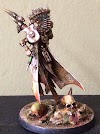You associate it with workwear – Carhartt particularly – or from a historical perspective, you think of it as material for sails. Through either lens, cotton duck comes with a series of connotations: Heavy, thickly woven, wax-coated, and tough-as-nails. As such, this amalgamation seems appropriate for a day outdoors on the worksite (or working in an equally cold warehouse), but too much for everyday use. Or, is it? As workwear appears on the runway, sees its profile rise (again) amongst streetwear aficionados, and menswear purists turn toward American heritage brands, cotton duck has left the purely technical echelons of steel toes, cord-management features, and ANSI-approved reflective strips. Instead, it’s gaining a reputation as a heritage fabric, almost in the same vein as Tweed.
Understanding the Fabric
Many guys think “It’s just canvas,” and if you were to look at the specs for a Carhartt jacket, that’s what you’d see – maybe mixed in with a hint of spandex for some flexibility. Yet, while this belief is partially true, cotton duck – based on the Dutch word “doek,” meaning 'linen canvas' – is actually a type of canvas with a higher thread count, denser weave, smoother handfeel and medium weight. Canvas, in its truest form, is a heavier-weight material with a coarser weave. Think about drop-cloths, for instance. Its wearability, in fact, is somewhat comparable to denim or twill. The difference? How the fibers are woven together: Cotton duck features a plainweave pattern – just over-under – while a diagonal combination characterises denim and twill. Understand, though, that the pattern itself isn’t just for aesthetic purposes. The tighter plainweave results in a more weather-resistant fabric that, on its own, holds up to repeat use and won’t let wind pass through. The only downside? The combination decreases the material’s breathability, especially when you compare it to denim and twill. For this reason, duck outlasts practically all cotton-based materials in the outdoors and, at one point, served as the backing for ultra-durable duct tape.
Treatments
If you’ve ever dealt with tarps in some form – storing a vehicle, covering a motorcycle, protecting your garden or for industrial purposes, you know canvas has durability on its side. Compared with its polyethylene and vinyl counterparts, however, it’s not waterproof, it has a tendency to attract mould and UV rays will fade its surface over time. As such, commercial-grade canvas goes through multiple treatments. For cotton duck, however, a wax coating does the trick. Beyond improving its long-term strength, the treatment gives it better, more dependable water resistance – crucial to days spent outdoors working, exploring, or even dealing with the winds and rain when you’re in the city. While the fabric isn’t completely waterproof, the wax’s repellent nature causes moisture to bead up and roll off, instead of soak through. The material’s two-for-one benefits go beyond apparel, though, and in fact, military bags and tents used it for decades. These days, while Cordura and other heavy-duty nylon variations have replaced cotton duck, it’s still a viable option for travel duffels, rucksacks, and even a commuter bag for the same reasons. In any context, the material’s construction easily accepts and absorbs treatments. Especially if the material or item is angled toward outdoor use, water-resistant, flame-retardant and mildew-resistant treatments may be added, resulting in a low-maintenance, high-use fabric meant to stand the test of time. To sum it up, its core is far sturdier than typical polyester and it goes neck-and-neck in terms of performance.
On the Job and Beyond
With traditional workwear, brands like Carhartt and Dickies pioneered the job-to-everyday piece close to a decade ago. If you’ve ever worked in construction, in a warehouse, or on a rig, you’ve likely encountered such a combination: A shirt that looks like flannel but features Sherpa lining and cord management features, jeans lined for warmth and equipped with kneepad pockets, a tee enhanced with stain resistance and moisture-wicking properties and a jacket that looks like it could take on a whole day in the dirt but still lets your body move. On the surface, you’re decked out in what appears to be everyday apparel, but your clothing’s less likely to rip, stain, and constrict your movements when you’ve got to be efficient. At the same time, it looks and feels tough, and keeps you warm and dry when you’re outdoors for hours. Cotton duck frequently fits through this framework, especially with the aforementioned treatments and hint of performance stretch construction. Essentially, it looks and feels a lot like denim, but then goes the extra mile when you need it. But, unlike traditional jeans, abrasion is less likely to wear it down. Plus, its burn resistance far exceeds anything made out of nylon or another synthetic material, and unless you hold the flame right against it, the fabric won’t end up with a series of pinholes, which essentially nullify a material’s water resistance.
Character Building
The initial feeling, though, turns many off the material: Stiff and inflexible, and likely to chafe once you put it on. But, like selvedge denim, it softens and becomes more pliable with time. If you’re at least in your 30s, you'll remember it’s like how denim used to be: You’ve got to give it a few washes and weeks of wear before it feels like it’s part of you. From there, though, that’s when the piece develops its character. Perhaps you notice some fading or even the occasional scuff mark, and finally feel it break in. In any case, it’s completely yours and as far away from fast fashion as you can get.
Article by Menswear Style
from Mens Fashion Blog, Mens Style Blog, Menswear Style Blog https://ift.tt/2RXjVzO






0 Yorumlar